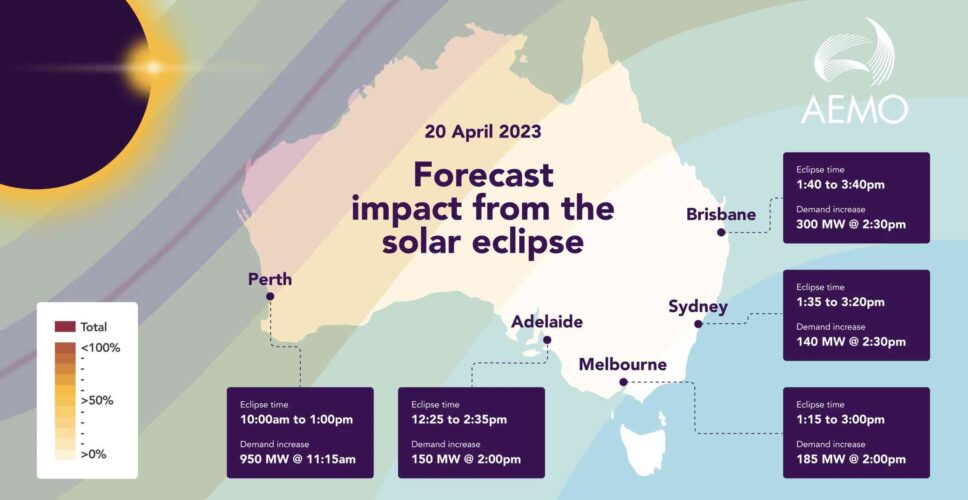The shadow from the solar eclipse that will sweep across Australia on Thursday is expected to take more than one gigawatt of solar power offline, with Western Australia the most affected as parts of the state experience complete darkness.
The Australian Energy Market Operator says the W.A. grid, already heavily dependent on rooftop solar during the day, is likely to see a 950W lift in demand in late morning (11.15am local time) with the impact ranging from 700MW to nearly 1GW in the state over a three hour period.
South Australia will also be affected by its partial eclipse, given the prominent role of rooftop solar in its grid, with a maximum impact of around 150W in the early afternoon, or between 5 and 20 per cent of anticipated output.
The impact – as a share of total generation and demand – will be smaller in the eastern states such as Queensland, NSW and Victoria, where the eclipse will cast a smaller shadow (see graph below).
AEMO says the reduction in solar will be manageable, although it did require some planning.
“Our teams have run simulations and modelled the likely impact of the solar eclipse on the millions of rooftop solar PV systems and electricity demand, confirming there’s no elevated risk to electricity supply or power system security,” AEMO head of operations Michael Gatt said.
“On Thursday, we expect the eclipse to reduce solar generation in Western Australia’s power system first, around 10am (AWST), and then move east into the larger National Electricity Market.
During the event, the greater Perth area will witness a range of 60 to 80 per cent of this total solar eclipse, compared to Exmouth, which is outside of the state’s main grid, known as the South West Interconnected System, which will experience total darkness for around a minute at 11:27am (AWST).
“AEMO has taken a number of actions with industry to prepare for the eclipse, which is expected to impact solar generation and electricity demand similar to volatile and dense cloud movement,” Mr Gatt said.
“We’ve been engaging with key stakeholders within the industry to coordinate preparation activities and ensure all parties are aligned.
“This includes increased operational checks, including reviewing generator and network outages, review of intermittent non-scheduled generation forecasts and reviewing demand forecasts based on latest available information,” he said.











